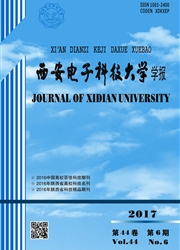

 中文摘要:
中文摘要:
针对经典粒子滤波方法进行多目标跟踪的发散问题,基于经典粒子滤波原理和聚类算法,提出一种伪粒子滤波方法.通过对经典粒子滤波重要性重采样结果进行聚类分析,获得相应目标的粒子子群集合以及相应的不动点.并证明了选取近于目标区域大小的聚类核函数带宽,聚类不动点即逼近目标的最大后验概率分布.通过数据关联确定多目标的最终状态.实验结果表明,该算法解决了经典理论的发散问题,可以完成实时多目标跟踪,且具有鲁棒性能和一定的生物视觉仿生功能.
 英文摘要:
英文摘要:
For the problem of divergence of the classical particle filter method for multiple object tracking in image sequences, a new particle filter, the so-called Pseudo Particle Filter (PPF), is proposed. The PPF invokes subset particles of generic particle filters to form a continuous estimate of the posterior density function of the objects. After importance-sampling resampling (ISR), the subset particles converge to the observations. It is proved that, using the appropriate kernel function of the mean-shift algorithm, we can get the subset particles of the observations and the fixed points of clustering results as the state of the objects. A multi-object data association and state estimation technique is proposed to resolve the subset particles correspondence ambiguities that arise when multiple objects are present. Experimental results demonstrate the efficiency and effectiveness of the algorithm for single and multiple object tracking.
 同期刊论文项目
同期刊论文项目
 同项目期刊论文
同项目期刊论文
 期刊信息
期刊信息
